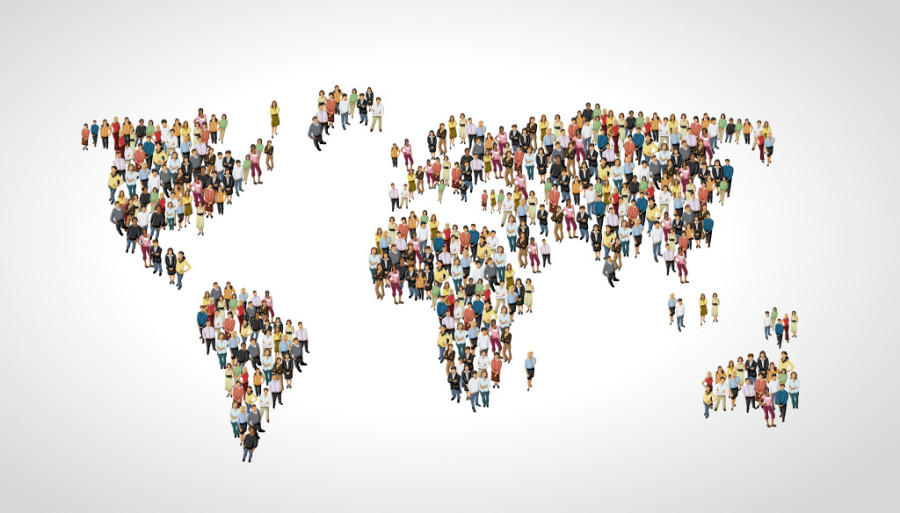As of the latest available data, India has emerged as the most populous country in the world, surpassing China. With a population of approximately 142.86 crore, India now exceeds China’s population by roughly 29,56311 lakh and become the most populous Country in the world.
Most Populous Country In The World
India has the world’s largest youth population, with over 908 million people under the age of 35. This represents 66% of India’s total population. In the 15-24 age group, India has the highest youth population in the world, with over 255 million people.
This large youth population presents both challenges and opportunities for India. On the one hand, it means that India has a large and growing workforce. This could be a major asset for the country’s economic development. On the other hand, it also means that India has to provide education, healthcare, and other services for a large number of young people. This can be a challenge, especially given India’s limited resources.
Population Statistics and Data Collection Methods
- Population statistics encompass various demographic data, including the count of individuals residing in a country or region, the number of births and deaths, as well as estimations of life expectancy and population growth trends.
- This information is often collected through population censuses, conducted regularly, with the 1st of January being a common reference point.
- Additionally, population registers are increasingly being utilized as an alternative source to gather such valuable demographic insights.
Most Populous Country In The World List
| Rank | Country | Population | World Share (In %) |
| 1 | India | 1,428,627,663 | 17.76 |
| 2 | China | 1,425,671,352 | 17.72 |
| 3 | United States | 339,996,563 | 4.23 |
| 4 | Indonesia | 277,534,122 | 3.45 |
| 5 | Pakistan | 240,485,658 | 2.99 |
| 6 | Nigeria | 223,804,632 | 2.78 |
| 7 | Brazil | 216,422,446 | 2.69 |
| 8 | Bangladesh | 172,954,319 | 2.15 |
| 9 | Russia | 144,444,359 | 1.80 |
| 10 | Mexico | 128,455,567 | 1.60 |
Causes of India’s High Population

- Historical population trends: Throughout history, India has maintained a consistently high population, particularly in its fertile northern plains. This region’s favorable climate allows for the cultivation of both wheat and rice, providing abundant food compared to many other parts of the world.
- Poverty and illiteracy: Impoverished families often believe that a larger family translates to more earning members. Some view having more children as a way to ensure support in old age. The prevalence of poverty and illiteracy also affect family planning decisions.
- Age-old cultural norms: Traditional beliefs in India prioritize sons as the primary breadwinners for families. This long-standing belief puts significant pressure on parents to continue having children until a male child or the desired number of male children are born, known as “Son Meta preference”.
- Illegal migration: Notably, illegal migration from neighboring countries like Bangladesh and Nepal has contributed to increased population density in India.
- Lack of awareness about family planning: Limited knowledge and awareness about family planning methods and their benefits, as well as government schemes related to family welfare and access to free birth control measures, have resulted in unwanted pregnancies and ultimately contributed to population growth.
Population control measures that can be implemented

- Raising the Minimum Age of Marriage: Since fertility is linked to the age of marriage, it is essential to increase the minimum age for marriage. In India, the legal age for marriage is currently 21 years for men and 18 years for women. Strict enforcement of this law and public awareness campaigns are necessary to ensure compliance.
- Promoting Education: Widespread education can positively influence people’s perspectives. Educated individuals tend to make informed decisions, delaying marriage and embracing smaller family norms. Educated women, in particular, prioritize their health and opt for fewer pregnancies, leading to lower birth rates.
- Adoption: Encouraging adoption is an effective means of population control. Couples who are unable to have biological children despite medical interventions should be encouraged to adopt orphaned children, benefiting both the orphans and the adopting parents.
- Urbanization: Promoting urbanization can contribute to reduced population growth. Studies indicate that urban areas generally experience lower birth rates compared to rural areas, making urbanization a potential solution.
- Strict Birth Control Measures: Although adopting China’s approach might not be suitable for India, various government-funded agencies like the Family Planning Association of India can actively promote family planning as a basic human right. Encouraging a two-child norm voluntarily can help reduce birth rates.
Key takeaways for competitive examinations
- Registrar General & Census Commissioner of India: Mritunjay Kumar Narayan
Find More General Studies News Here



 ODI World Cup winners full list (1975-20...
ODI World Cup winners full list (1975-20...
 Who was the First Chief Minister of Tela...
Who was the First Chief Minister of Tela...
 Meta Unveils Upgraded AI Assistant Power...
Meta Unveils Upgraded AI Assistant Power...
